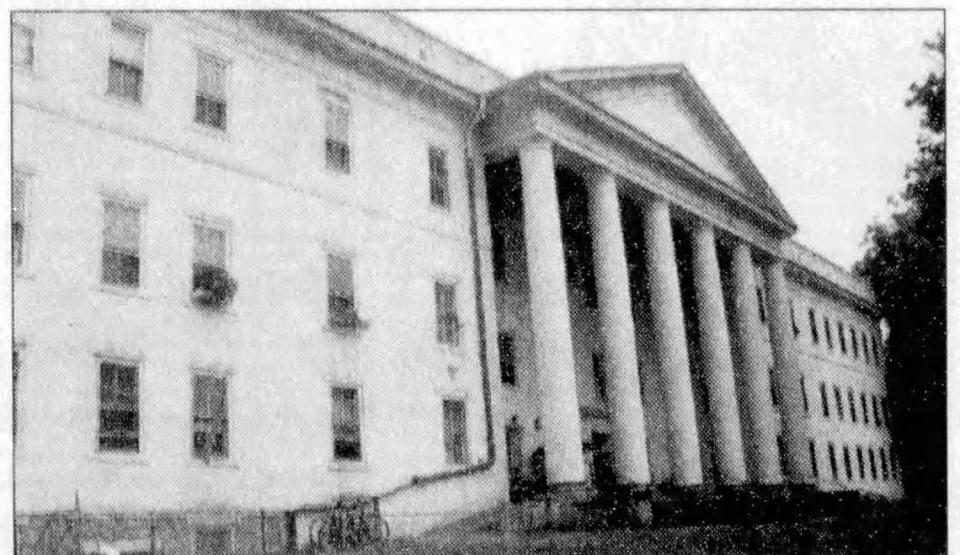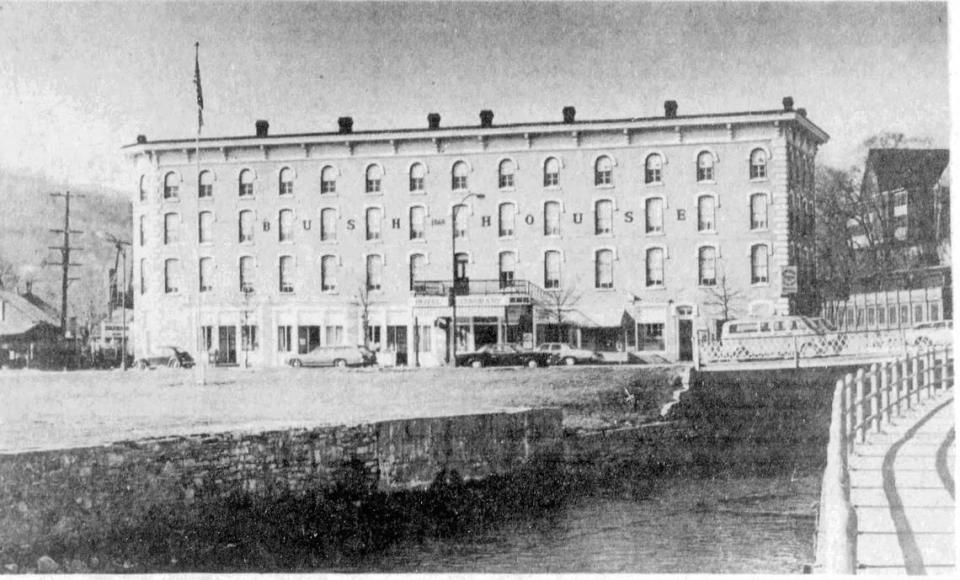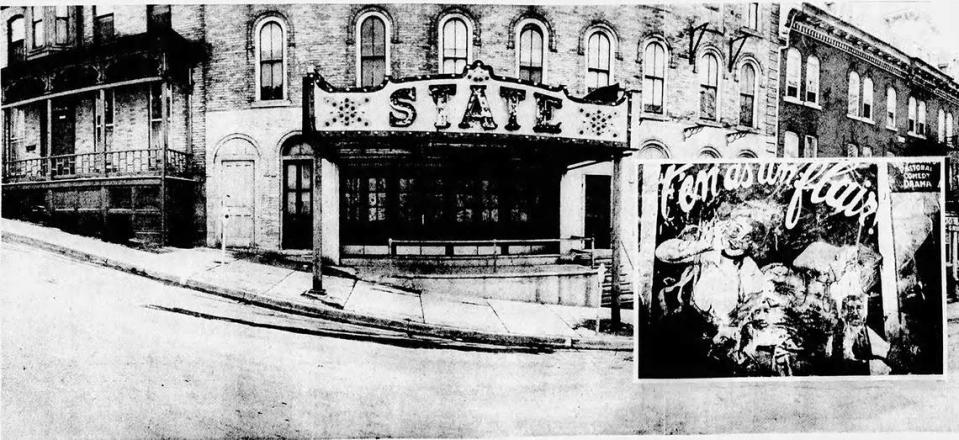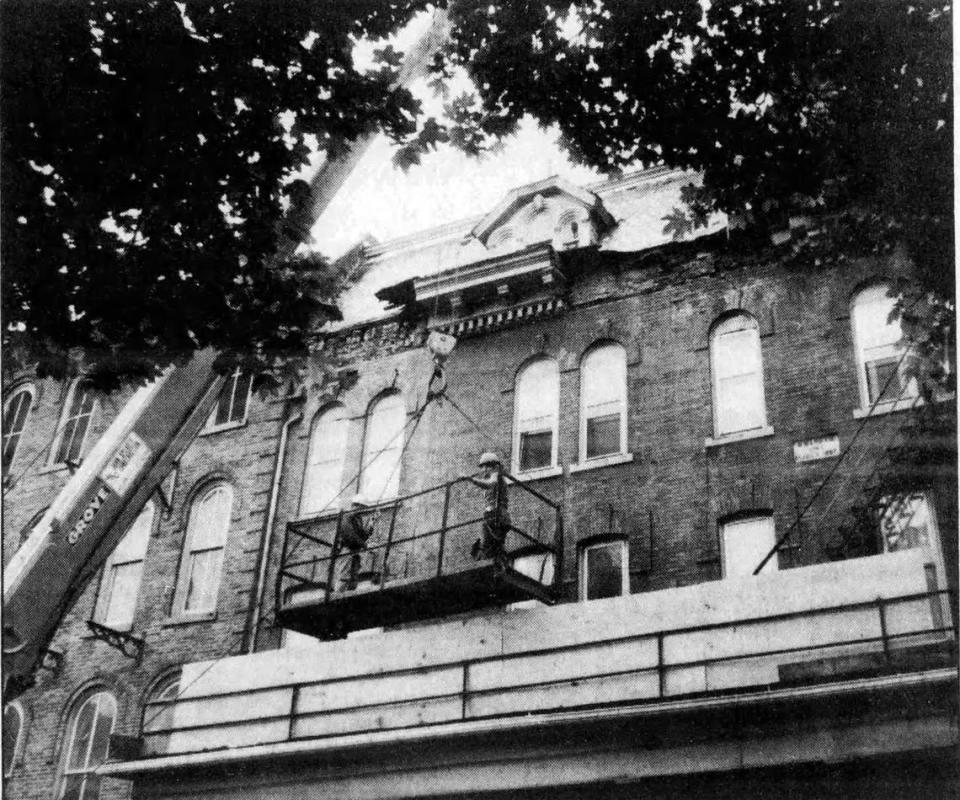See these iconic Bellefonte buildings lost over time. Do you remember their history?
Bellefonte is known for its historic buildings and the historical figures who once lived or visited there.
The borough landscape has been reshaped after several fires this century. With the help of the CDT archives, here’s a look at four well-known pieces of the borough’s past that are no longer standing.
How much do you remember about them?
Bellefonte Academy
The Bellefonte Academy long stood atop a steep hill on West Bishop Street.
The “school in the mountains” — known for educating future governors, senators and judges and other public figures — was founded in 1805, a year before the borough of Bellefonte was incorporated.
A fire in July 1904 destroyed the school’s upper floor, but the facility was open again by the fall of 1905. The academy went out of business in the early 1930s, though Bellefonte High School students held classes there from 1939-42 after their school was destroyed by fire. The academy property was purchased in 1946 and turned into apartments.
The academy was also known for athletic success and played Penn State in football a handful of times around the turn of the 20th century.
The academy was destroyed by fire in 2004.

Bush House
The Bush House was built in 1868 on the corner of High and Water streets, welcoming visitors to the borough. John Blair Linn’s “History of Centre and Clinton Counties” described it as “one of the most perfectly appointed, as well as the most commodious, hotels in Central Pennsylvania.”
It was one of the first hotels in the country to have electric lights, a system designed by guest Thomas Edison. Several other notable guests are said to have stayed there when their trains passed through town, including Henry Ford, Amelia Earhart and Charles Lindbergh.
The Bush House was renamed the Penn Belle Hotel in the mid-1930s and reverted to its original name in 1974.
The four-story brick structure was home to seven businesses, including the popular Schnitzels Tavern, when it burned down in 2006.

Garman Theatre
The Garman Opera House opened in 1890 on East High Street. The building hosted vaudeville acts, Wild West shows and famed performers Harry Houdini, George Burns and Gracie Allen.
In the early 1900s, the theater began showing films — silent, then talking, the Bellefonte Historical and Cultural Association said. In 1931, it was renamed the State Theatre. The final movie was shown in 1961, and the facility was turned into a warehouse. The building received an artistic lift in the mid-1990s, when the theater’s interior was renovated for plays. In 2000, movies returned.
The theater closed in 2008 and was vacant and in foreclosure when it was damaged in a 2012 fire at the adjoining Hotel Do De.
The Garman was demolished in 2014 after a monthslong dispute between a preservation group and borough officials to make way for an affordable housing project.

Hotel Do De
As John Blair Linn tells it, Daniel Garman bought the Franklin House property on East High Street in 1861, expanded it and renamed it The Garman House. In 1888, the building was destroyed by fire and was rebuilt and reopened the next year. At one point, the hotel was known as The Chief. In 1965, the CDT reported that proprietor Clarence Bingaman and his partner renamed the hotel by using the first two letters of their wives’ names — Dorothy and Delores.
The hotel was destroyed in a 2012 fire and was razed along with the Garman Theatre.


